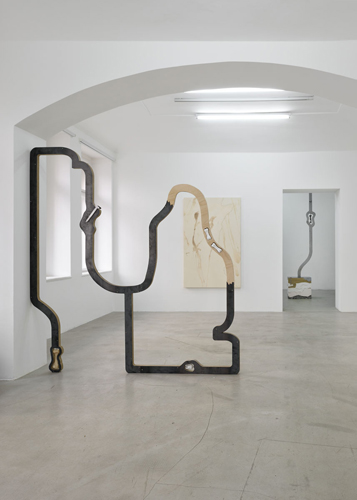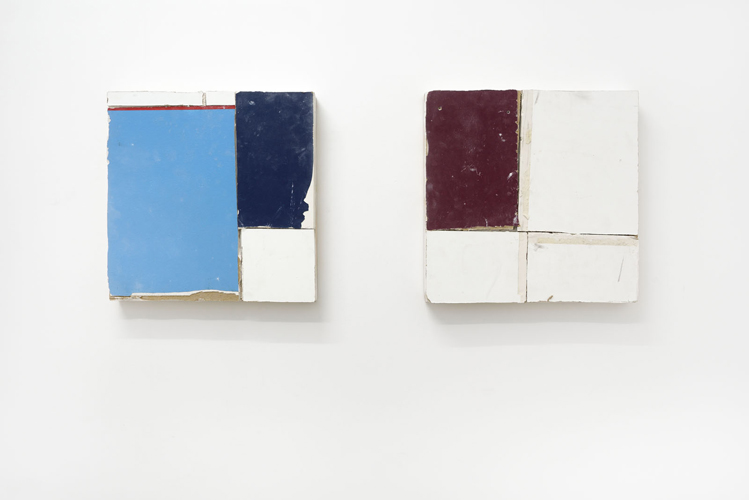BERLÍNSKÝ MODEL
hunt kastner & Arratia Beer
ARTISTS: HOLLY HENDRY, PABLO RASGADO, ANNA VIRNICH
17|3|-5|5|2018
hunt kastner & Arratia Beer
ARTISTS: HOLLY HENDRY, PABLO RASGADO, ANNA VIRNICH
17|3|-5|5|2018
hunt kastner is proud to present works by three artists represented by the Berlin-based gallery Arratia Beer for the inaugural exhibition of the collaborative multi-city project Berlínsky Model 2018 – Holly Hendry, Pablo Rasgado, and Anna Virnich. The connecting thread that permeates throughout these artists’ works and roots itself in the exhibition space is a shared sensitivity in approaching temporality and how time shapes our material world. Time is heavy – it piles up, cakes layers on top of itself, and leaves scars and whispers of the past in its wake. The works of Holly Hendry, Pablo Rasgado and Anna Virnich explore the passing of time by unearthing it, reassembling and re-contextualizing it, and sometimes allowing for spontaneous moments and gestures to set themselves into permanence.
“We are all in pieces” is a line from the text accompanying Holly Hendry’s solo exhibition For a Skeleton to Hang Soft Tissues On held at Arratia Beer in 2017, and precisely refers to the recognizably human bits and fragments lodged in her sculptures. One can notice small keys and screws piercing through different layers of material, as well as bones snaking through the piping. Hendry’s objects, with their saccharine-hued layers like cut outs of soil horizons burping up the occasional fossil, suggest that they were once part of a much larger whole than any gallery space could possibly contain. These slabs of excavated ground reveal an accumulation over time, while simultaneously alluding to the structure of the space itself and the mechanics of which the visitor cannot see – the complex architecture hidden behind the polished white walls.
While one can recognize the enduring nature of Hendry’s work, Pablo Rasgado’s dry-wall paintings point out exactly the ephemerality of temporary structures and exhibition architecture. As opposed to a blank canvas, Rasgado starts with already existing material. His abstract paintings come from various sources – many of which include walls constructed for his previous exhibitions. When reconfigured, the drywall pieces resemble abstract paintings that fold and unfold into themselves. By bringing the recycled walls into the gallery space, Rasgado re-contextualizes them, and not only blurs the distinction between art and its supporting architecture, but extends the life-cycle of the physical material.
Materials that collect and bare traces of encounters and manipulation over time are a constant in the work of Anna Virnich. Her Untitled #40 and Leather #4 pieces may at first seem like painted compositions; however, upon a closer look one can notice their intricacies. Virnich’s patchwork on wood consists of delicately sewn together swatches of airy silk and polyester fabrics. The artist often chooses to work with pieces of clothing that carry lingering scents from those who have worn them before – thus, a kind of intimacy and memory are stitched into the final form. Virnich’s leather works stretched across their frames also show traces of the artist’s handling, with trickles of beeswax dripped onto the surface, immediately drying where they landed. In this regard, Virnich captures and solidifies a moment in time, much like in her hanging works that exhibit the indentations of a hand gripping the malleable material – a fleeting touch made visible.
Christina Gigliotti
special thanks to the 2018 Berlínsky Model project partners: Goethe Institut Prague, Czech Center, J&T banka, and media partners: Art+Antiques and artmap, for their support of this project.



















